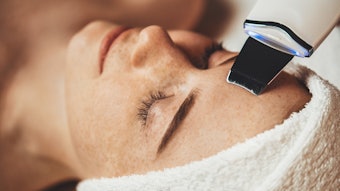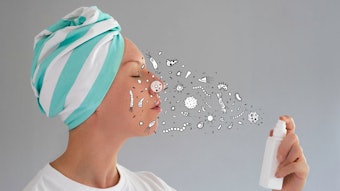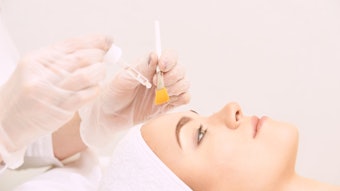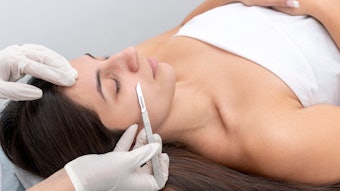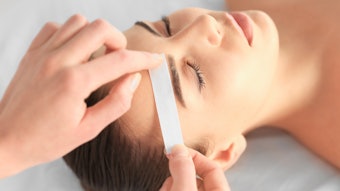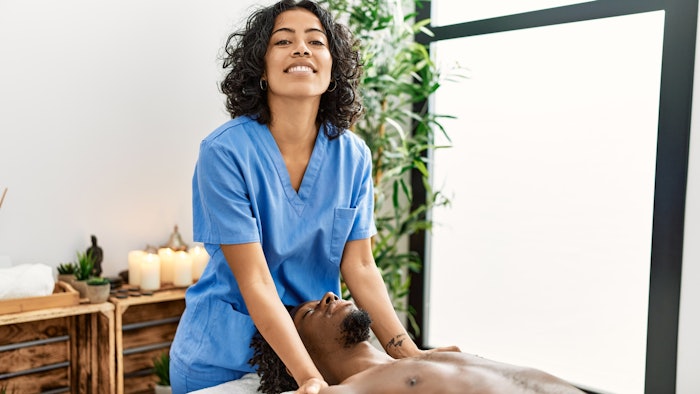
When it comes to having a thriving business in the spa industry, there has been a heavy focus on what Covid-19 changed. Maggie Staszcuk, Cosmetology Education Manager, ASCP discussed this at our Face & Body Northern California show in her advanced ed session “Impact of COVID on Your Business and Reducing Risk.” However, she dove deeper into how important reducing risk is in the spa, and why looking into having your spa legally covered is crucial.
Covid-19 and Industry Growth
Staszcuk opened the class by asking the class how they were impacted by Covid-19. Many attendees mentioned their changes in social media, having to do at-home consultations and changing their sanitation practices once they reopened.
“The beauty industry is an everchanging and growing field that is leaving the spa industry with new opportunities.” - Maggie Staszcuk
The good news in all of this is how the beauty industry is continuing to evolve and change, which Staszcuk noted leads to an unbelievable amount of opportunities. However, as the spa industry grows, it is exceedingly important to make sure that you are keeping yourself protected and covered.
The Liability Low-Down
Staszcuk dives into three different forms of liability, what they mean, and how things can go very wrong if you are not properly protecting yourself. While the two most common liability coverages fall within chemical peels and waxing, she implored that there is a lot more opportunity for accidents beyond those treatments if the proper care, coverage and steps are not taken.
Unfortunately, there are clients out there that will report false claims, and spa professionals should make sure they are properly protected. Similarly, sometimes between freak accidents and honest mistakes there are many ways that spa professionals can make sure they are being as safe as possible in their practice.
1. Professional Liability
This liability references if a client is injured during the service you performed. Some examples that Staszcuk included of this type of liability included if a steamer splashed scalding water on a client, or a mag lamp breaking and cutting the orbital bone on a client. The point being that accidents can happen and spa professionals should be covered.
2. Product Liability
This falls within any kind of negative reaction that a client may have with a product that is used during a service or recommended for home-care after a client
To provide an example of this in practice, Staszcuk went into a heart wrenching story about a mother of two who dived from anaphylactic shock. Now, how could this happen? It came to light that no intake form was submitted for this client, meaning she had no opportunity to note ingredients she was allergic to.
3. General Liability
This covers any kind of general accidents that might come up including falls, furniture damage, etc. Staszcuk provided an example of what general liability could cover by telling a story of a woman who had an antique table in her spa. Unfortunately, a client put a glass down and stained the table with a water ringlet. Luckily, since she had her general liability insurance in order, she was able to save thousands of dollars and have the table fixed.
Lessons Learned
Staszcuk emphasized that when it comes to covering yourself there are some steps you can take besides your liability coverage.
Document everything. This can really save you from false claims that can cost millions and years of the spa professionals time.
Peels and rosacea do not mix. This is just a standard that needs to be remembered in any practice.
Patch test should be a standard. Sometimes clients are wrong about how their skin will or will not react to ingredients, so always patch test.
10 Ways to Reduce Risk
Besides making sure you have the proper liability insurance to cover your practice should and accident occur, there are other ways that spa professionals can reduce risk and occurrences of risks in their treatment room including:
- Maintain a safe work environment,
- Routinely check your heat sources,
- Always do intake, health history, waiver forms, etc.,
- Discuss potential risks or contraindications,
- Discuss expectations,
- Keep accurate records,
- Use caution when applying heat,
- Post treatment practices should be discussed,
- Build strong and professional relationship with your clients, and
- Practice withing scope of your state.
What To Do Should a Claim Arise
Even if you follow all of the right steps, nobody is perfect. Sometimes things can still go wrong in the treatment room, so it’s important to know the next steps when this happens.
- Know what to do before the incident
- Stay calm and your client will too
- Assess injuries, seek medical attention immediately
- Do not offer to pay for medical expenses
- Never admit fault or liability
- Take photos
- Document the incident in writing
- Contact your insurance company ASAP
- Follow up with your client unless otherwise directed by your insurance company
- Don’t be defensive
Insurance Basics
Shared vs. Personal Coverage. Staszcuk educated on how shared coverage is what it sounds like. When you share coverage with others that means that you might not be able to have a claim paid out by insurance because the shared amount has already been used up. With individual coverage however, that is the amount you have and is only used to your personal claims. In the working world, this can be seen as shared coverage that covers all of your employees in the spa, but your employees can also have individual coverage for themselves.
Claims Made vs. Occurrence Form. Claims made coverage requires claims be reported while your policy is in effect. If your policy has expired and someone makes a claim against you, even if the incident took place during a period where you were covered, you will have no coverage due to your policy being over. The insurance company also has the right to refuse to renew your policy. Occurrence forms means coverage continues for incidents that occur while you were insured, even if a claim is filed at a later date when your policy has lapsed.
Cover Your Practice
It’s safe to say that whether it be a world impacting pandemic, or simple slip and fall, it is crucial for spa professionals to keep themselves covered and reduce risk in their spa. These tips and tricks can help spa professionals make sure they are keeping themselves covered, and really taking the proper steps and procedures to make sure you are providing a soothing and safe space for your clients.
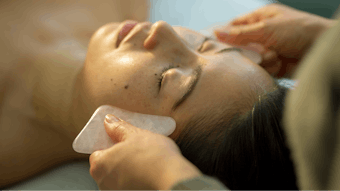
![[Expo Hall Excitement] New Location, Skin Inc. LIVE! Stage and More](https://img.skininc.com/files/base/allured/all/image/2023/08/AdobeStock_286488525.64de4ffad0598.png?auto=format%2Ccompress&fit=crop&h=191&q=70&rect=0%2C628%2C6000%2C3375&w=340)
